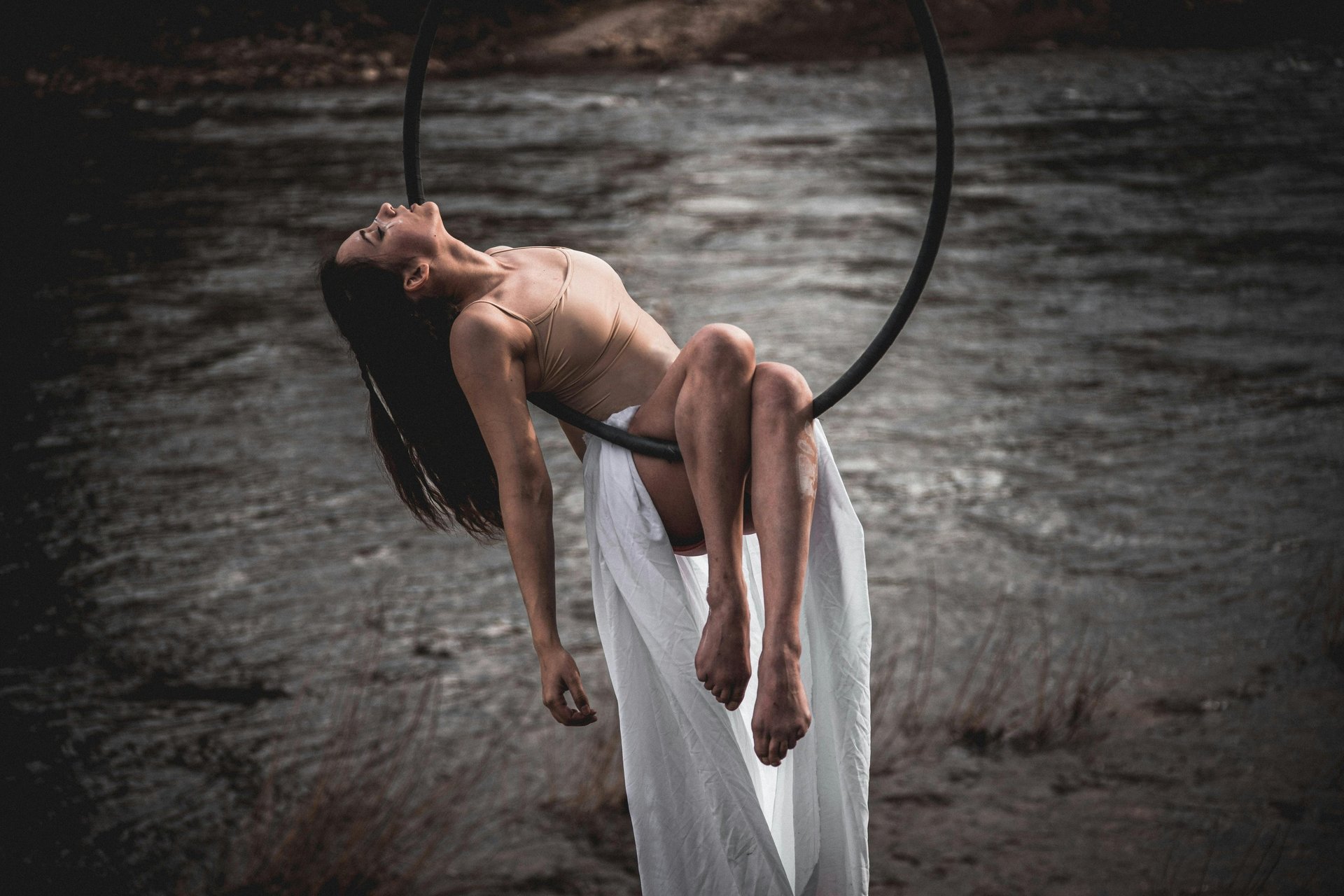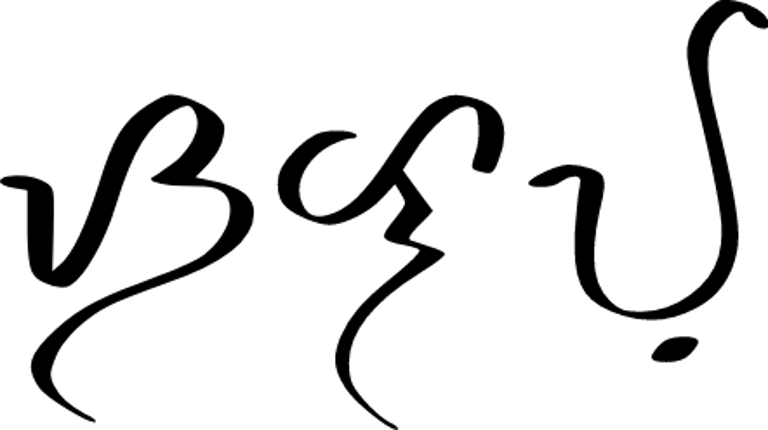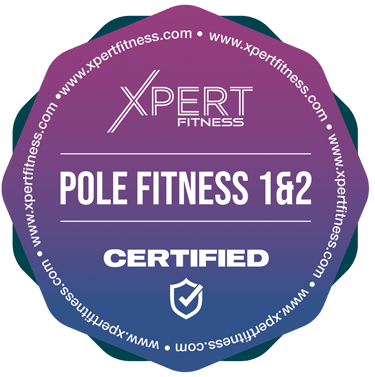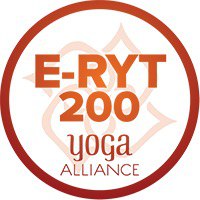
AERIAL CIRCUS
THE COURSES
- Beginners (1)
Beginner aerial hoop classes are designed to introduce newcomers to the fundamentals of this captivating form of aerial arts. Here’s what you can typically expect from such classes:
Introduction to Aerial Hoop: Classes begin with an overview of the aerial hoop (also known as lyra), including its parts, safety considerations, and basic terminology.
Warm-Up and Conditioning: Participants engage in a thorough warm-up to prepare the body for aerial work. This often includes mobility exercises, strength training, and flexibility routines to build the necessary physical foundation.
Basic Mounts and Dismounts: Students learn how to safely mount and dismount the hoop, focusing on proper technique to ensure safety and control.
Fundamental Poses and Transitions: Classes introduce basic poses and transitions within the hoop. Instructors guide students through simple moves that help them become comfortable with the equipment and develop their strength and coordination.
Strength and Flexibility Training: Emphasis is placed on building upper body and core strength, as well as enhancing flexibility, which is essential for progressing in aerial hoop practice.
Safety Practices: Instructors prioritize safety by teaching students the importance of proper spotting, using crash mats, and understanding how to fall safely.
Creative Expression: As students gain confidence, they are encouraged to explore their creativity through movement, incorporating personal style into their practice.
Cool Down and Stretching: Classes typically conclude with a cool-down period, allowing participants to stretch and relax their muscles, promoting recovery and flexibility.
Overall, beginner aerial hoop classes provide a supportive and engaging environment for individuals to discover the joys of aerial arts while building strength, coordination, and confidence.
- Beginners (2)
Beginner Level 2: Aerial Circus (Lyra) – Tricks & Shapes
Build strength, confidence, and creativity in the hoop.
Ready to level up your lyra skills?
Our Beginner 2 Tricks & Shapes Course is perfect for students who have completed Beginner 1 or have a basic foundation on the aerial hoop. This 8-week course focuses on expanding your repertoire of poses, tricks, and dynamic entries and exits, while reinforcing proper technique, strength, and safe progressions.
You’ll explore new shapes both in and under the hoop, develop clean lines and control, and start building the body awareness needed for more complex aerial work. This course bridges the gap between static positions and the dynamic flow introduced in Elementary level classes.
In this course, you’ll:
✨ Learn new tricks and transitions with confidence
✨ Refine your technique and improve strength
✨ Explore creative shapes and movement pathways
✨ Build endurance and body awareness in the air
Ideal for those who want to grow their skill set and gain a solid platform to move into more challenging aerial work.
Next step: Elementary Aerial Circus (Lyra)
- Elementary (Level 2)
Pre-requisits: Beginners Course
Aerial hoop classes for elementary level are designed to introduce students to the basics of aerial arts in a safe, fun, and engaging way. These classes typically focus on building strength, flexibility, and coordination while learning foundational skills on the aerial hoop, also known as the lyra. Here's what you might expect:
1. Warm-up and Stretching: Classes usually begin with a fun warm-up and stretching routine. This helps students prepare their muscles and joints for aerial work and reduces the risk of injury.
2. Basic Techniques: At the elementary level, the focus is on simple grips, mount techniques, and basic positions. Students may learn how to get into the hoop, hold it securely, and perform gentle spins. There might be some basic shapes like sitting, straddling, or lying inside the hoop.
3. Strength and Conditioning: Since aerial hoop requires upper body and core strength, elementary-level classes incorporate exercises to build muscle, especially in the arms, shoulders, and core. These exercises might include floor drills that strengthen muscles used for climbing and holding positions on the hoop.
4. Safety: The importance of safety is emphasized from the start. Students are taught how to properly enter and exit the hoop, as well as the importance of spotting (having someone watch their movements to ensure they're safe).
5. Playful and Creative Approach: Aerial hoop classes for children are often structured with creativity in mind. Teachers may encourage kids to invent their own movements or explore different ways of moving in the hoop. This playful approach helps keep kids engaged while also learning the necessary skills.
6. Cool Down: The class usually ends with a cool-down period, which includes stretches and relaxation techniques to help students ease their muscles after exertion.
Overall, elementary-level aerial hoop classes provide a welcoming introduction to the circus arts, emphasizing fun, safety, and building the foundation for more advanced skills as students progress.
- Intermediate/ Advanced (Level 3/4)
Pre-requisits: Elementary
Aerial hoop classes at the inter/Advanced level build on the basic skills developed in elementary classes and begin to incorporate more advanced techniques, strength training, and creativity. Students at this level are typically able to confidently perform basic mounts, holds, and spins, and are ready to challenge themselves with more complex movements. Here's what an intermediate-level class might involve:
1. Warm-Up and Mobility Work
Classes start with a dynamic warm-up and mobility exercises to prepare the body for the increased demands of more advanced aerial moves. This might include joint rotations, stretching, and conditioning drills that target areas like the shoulders, hips, and core.
Flexibility and strength drills are often tailored to the student's current abilities, helping them improve their range of motion and muscle endurance.
2. Advanced Mounts and Transitions
Students will begin learning more complex mounts (ways to get into the hoop) and transitions (how to move smoothly between different positions). These might involve climbing into the hoop, spinning, or performing a controlled roll-up to a standing position.
There’s also a focus on smooth transitions from one trick to another, developing fluidity and grace in the movements.
3. Tricks and Poses
Inter/Advanced students work on a variety of aerial tricks, such as:
Single-leg holds and foot locks to maintain balance and control while spinning.
Inversions (upside-down positions) with proper technique and strength.
Roll-ups, where students use momentum to move up and down the hoop.
Leg and body wraps, where students use their legs or body to create shapes or perform tricks that require flexibility and strength.
Spins and drops: Students learn to add dynamic elements to their routines, including spins around the hoop, incorporating various body positions and preparing for drops (controlled descents).
4. Strength and Endurance Training
Inter/Advanced aerial hoop classes place a significant focus on building upper body, core, and grip strength, as these are necessary to perform advanced moves with control.
Exercises may include more challenging drills, such as leg lifts, pull-ups, or holding static positions like a straddle or tuck for extended periods to build endurance.
5. Choreography and Performance
At the inter/Advanced level, students may begin to incorporate choreography into their practice. This includes combining various tricks, spins, and transitions into a flowing sequence or routine.
Teachers might give students the freedom to experiment with musicality, adding expression and creativity to their movements. The emphasis is not just on technical skill, but also on how movements can be performed with style.
6. Safety and Spotting
As students begin performing more advanced moves, safety becomes even more important. Teachers will often provide spotters or use safety mats to ensure that students can practice more complex drops or inversions safely.
The class will likely continue to emphasize proper technique to avoid injury, particularly with more challenging movements such as inversions or large dynamic drops.
7. Cool Down
As with all aerial classes, a cool-down period is essential. This phase includes stretching and relaxation exercises to help students prevent muscle strain and to enhance flexibility after working on more intense moves.
Key Focus Areas:
Controlled inversions and transitions.
Dynamic movements like spins and drops.
Strength-building exercises to support advanced tricks.
Fluid choreography and creative expression within the hoop.
Overall, Inter/ Advanced aerial hoop classes offer a balance of technical skill development, strength training, and creativity. Students work on refining their existing techniques and start to explore more advanced, dynamic movements that challenge their strength, flexibility, and control.
FAQ.
- What should I wear
We would advice you to wear form-fitting athletic clothing that covers the backs of your knees and armpits, like leggings and a fitted top with sleeves to protect your skin from friction. Over time you may be more experimental and creative with your outfits to compliment your choreographies. You may choose to wear Sports Bras and fitted lycra shorts once you become more comfortable on the Lyra/ Hoop. Avoid loose clothing, zippers, or jewellery.
- Do I need to be flexible or have a dance background?
You absolutely don’t need to be flexible or have a dance background to start learning Aerial Circus! These classes are designed to be welcoming to all—whether you’re a complete beginner or have some movement experience. Right now, we’re offering mixed ability classes, which means everyone trains together, and you're encouraged to progress at your own pace.
As the program grows, we’ll introduce more structured levels, but for now, each class includes modifications and variations tailored to individual needs. Whether you’re working on building strength, coordination, or confidence in the air, you’ll be supported every step of the way. Everyone starts somewhere—and your journey can start right here!
Off Peak Day's and Times: Weekends and Before 1 pm
Peak Times: Weekday's: From 4 pm
*Schedule is subject to change




